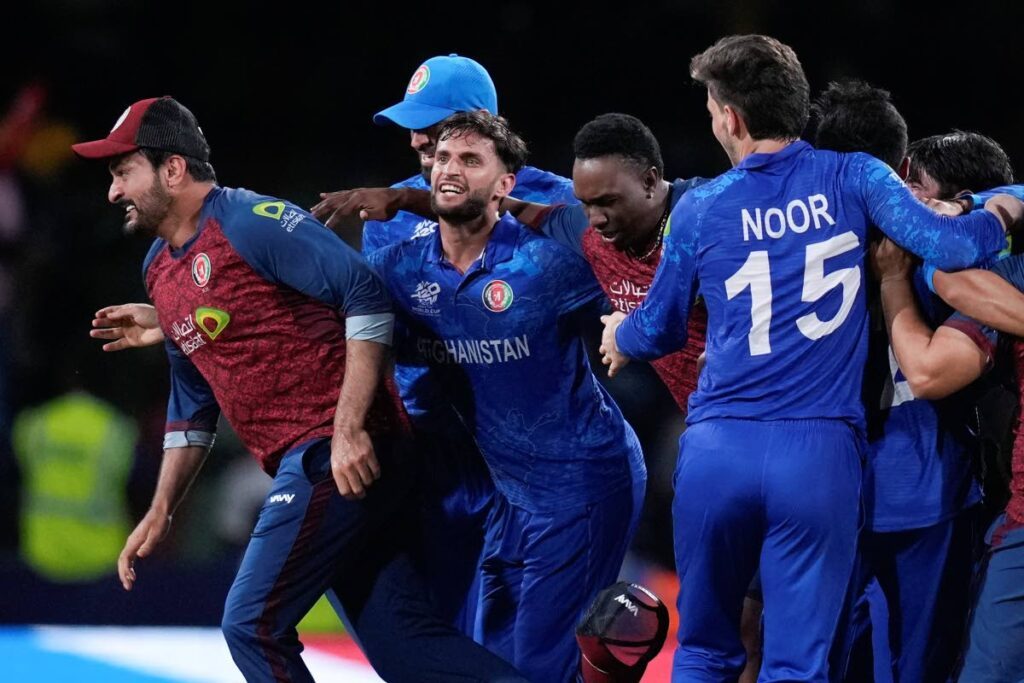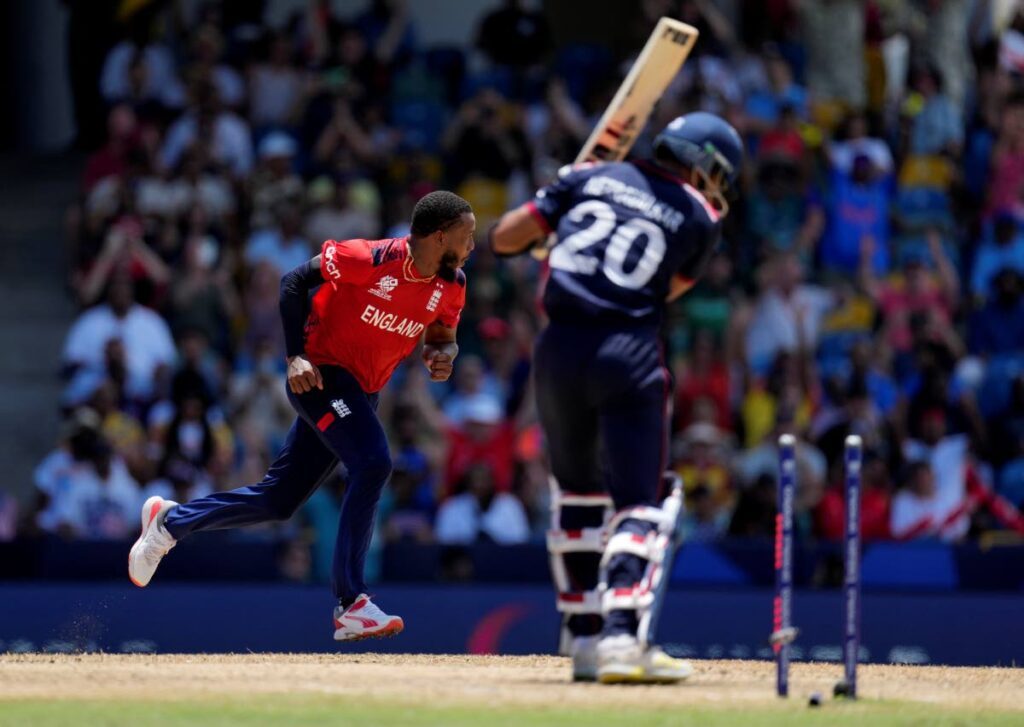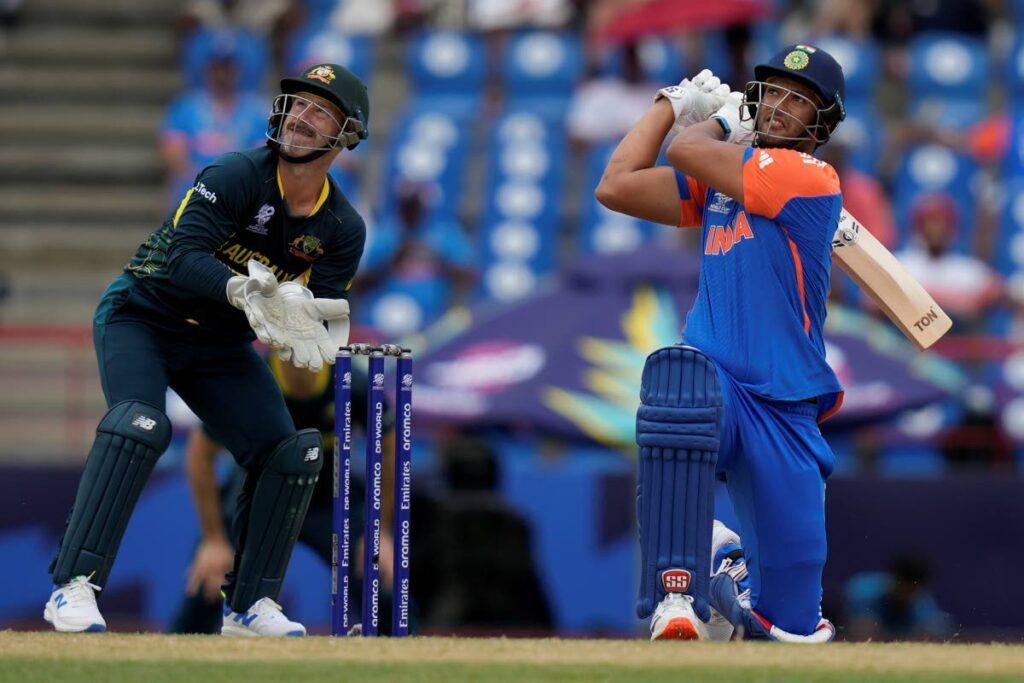How the T20 World Cup semifinalists got there

STEPHON NICHOLAS and RONEIL WALCOTT
Three straight wins, including the prized scalp of New Zealand, in Group C of the tournament secured Afghanistan's maiden qualification to the Super Eight phase. Not even a heavy 104-run defeat to co-hosts West Indies in their final group game – a dead rubber– could erase the shine of their achievement.
Leaning on a world-class bowling attack, Afghanistan bundled out their first three opponents for 58 (Uganda), 75 (New Zealand) and 95 (Papua New Guinea). Left-arm pacer Fazalhaq Farooqi, the tournament's top wicket-taker, and seamer Naveen-ul-Haq have terrorised batsmen with the new ball while Khan's leg-spin remains a threat to even the finest batsmen.
However, Afghanistan received a rude awakening to the Super Eight with a 47-run spanking courtesy India. The Asians, coached by ex-England batsmen Jonathan Trott with two-time T20 World Cup winner and Windies T20 legend Dwayne Bravo as bowling consultant, continued fighting.
Against Australia in their next game, Afghanistan ran their opponents ragged – literally.
A defeat would have ended their World Cup dream and their batsmen responded accordingly, running for singles like their lives depended on it. Singles were somehow turned into twos as a rattled Australia failed to match the desperation and energy of the Afghans.
On a tricky surface, Afghanistan posted 148 for six from their 20 overs.
Against a formidable Afghanistan bowling attack, the total proved more than enough as Australia were all out for 127.
Needing a win in their final fixture against Bangladesh on June 24, the strength of Afghanistan's bowling unit was again evident as they defended a meagre score of 115 for five in a rain-affected contest, winning by eight runs via Duckworth-Lewis-Stern method after bowling out their rivals for 105.

Against South Africa in the semis on June 26, underestimate Afghanistan at your peril.
Champs England overcome slow start
Reigning champions England have made the final four, but they arguably took the long route after an unconvincing start to the tourney which saw them flirting with a first-round exit in Group B.
Grouped with Oman, Namibia, Scotland and Australia, the Jos Buttler-led English needed a huge favour from their Aussie adversaries in the final group match to stay in the tournament.
If they do become the first team to defend their T20 World Cup title, the English would reflect on June 15 as a decisive day in their campaign.
With the rain threatening to cut England's tournament short, England got a 41-run win against Namibia in a ten-over affair to move level with Scotland on five points, before a brilliant Marcus Stoinis fifty defied Scotland and effectively sealed England's passage to the Super Eight.
In the Super Eight, England had two wins and one loss, and they would hope to take confidence from their first game against the Windies, which saw them getting a dominant eight-wicket win in St Lucia in pursuit of 181. In their final Super Eight match, Buttler took the US apart with a brutal 83 from 38 balls, and he would aim to replicate his form for the semis against the unbeaten Indians in Guyana on June 27.
Indian batting starts to click
Picked as favourites by many, India have hardly put a foot wrong in the tourney – winning six of their seven matches to go along with one abandoned affair.
India defeated Ireland, US and their longtime rivals Pakistan in the group phase, before putting in a string of dominant performances in the Super Eight with thumping wins over Afghanistan, Bangladesh and Australia.
Blessed with one of the best batting lineups in world cricket, India weren't at their free-flowing best in Group A on tough Nassau County International Cricket Stadium, New York pitches.
Virat Kohli, the leading run-scorer in T20 World Cup history, struggled in New York, and he had scores of one, four and duck in the first three games.

India's experienced bowling attack set them apart in Group A, though, and they restricted the opposition under 120 in each of their three matches to saunter into the Super Eight.
Flying to the Caribbean seemed to work wonders for the Indian batting group as they have since flexed their collective muscle. They scored 181 against Afghanistan, 196 against Bangladesh and a mammoth 205 versus Australia as they delivered a knockout punch to the 2021 champions.
This form poses ominous signs for the other semifinalists, and captain Rohit Sharma made his own statement with a punishing knock of 92 from 41 balls against Australia in St Lucia on June 24.
South Africa find ways to win
Labelled as perennial chokers at World Cups, Aiden Markram and his South African team will be trying to put that tag to bed when they vie to make their first-ever T20 World Cup final appearance.

The Proteas are one of the two remaining unbeaten teams in the tourney, and to date, their games have been a compilation of gripping, anxious finishes.
In the group stage, South Africa skittled out Sri Lanka for 77 in New York, before limping to tight wins against Netherlands, Bangladesh and Nepal – with the latter being a dramatic last-ball, one-run win.
In the Super Eight, the Proteas put their death bowling to the test with an 18-run victory against the US and a seven-run victory over England.
The true test of their resolve arguably came in their final Super Eights game against West Indies, though, as they held their nerve to get a three-wicket win with five balls to spare via the DLS Method in a must-win game for both teams.
Markram reckons his team hasn't played their best game yet, and he will hope for a great all-round effort in their semi versus the giant-killers, Afghanistan, in Trinidad.

Comments
"How the T20 World Cup semifinalists got there"